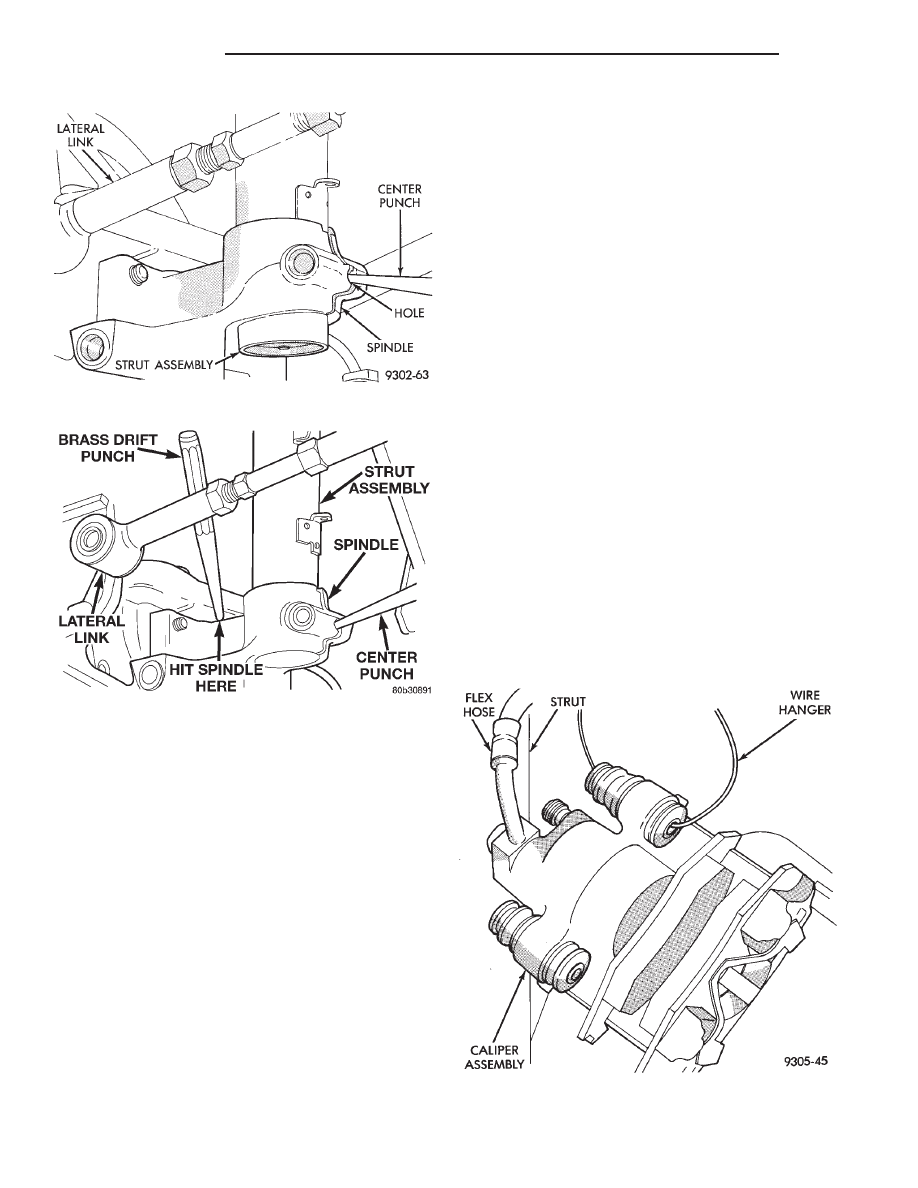Chrysler New Yorker. Manual - part 15

(3) Install bolt attaching trailing arm to trailing
arm bracket on bottom of spindle (Fig. 16). Do not
fully tighten attaching bolt at this time.
(4) Install the disc brake adapter back on the spin-
dle. Install the 4 bolts attaching the disc brake
adapter to the rear spindle (Fig. 15). Tighten the disc
brake adapter mounting bolts to a torque of 115 N·m
(85 ft. lbs.).
(5) If vehicle is equipped with antilock brakes,
install the speed sensor head into the rear disc brake
adapter (Fig. 14). Tighten the speed sensor head
attaching bolt to a torque of 7 N·m (60 in. lbs.).
(6) Install the rear hub and bearing assembly on
the rear spindle. Install hub and bearing assembly
retaining washer and nut on spindle (Fig. 13).
Tighten the hub and bearing retaining nut to a
torque of 168 N·m (124 ft. lbs.).
(7) Install the rear brake disc on the hub.
(8) Carefully place rear brake caliper over rotor
and install on adapter. Tighten the caliper assembly
to adapter mounting bolts to a torque of 22 N·m (192
in. lbs.). Refer to Rear Disc Brakes in Group 5
Brakes in this service manual for required caliper
installation procedure.
(9) Install wheel and tire assembly on vehicle.
Tighten the wheel mounting stud nuts in proper
sequence until all nuts are torqued to half specifica-
tion. Then repeat the tightening sequence to the full
specified torque of 129 N·m (95 ft. lbs.).
(10) Lower vehicle to the ground.
(11) Tighten the lateral links to spindle attaching
bolt to a torque of 135 N·m (100 ft. lbs.).
(12) Tighten the trailing arm to spindle bracket
attaching bolt to a torque of 100 N·m (75 ft. lbs.).
(13) Check and reset rear wheel TOE to specifica-
tions if required.
REAR HUB AND BEARING
REMOVE
(1) Raise vehicle on jackstands or centered on a
frame contact type hoist. See Hoisting in the Lubrica-
tion and Maintenance section of this manual, for the
required lifting procedure to be used for this vehicle.
(2) Remove the rear wheel and tire assembly from
the vehicle.
(3) Remove the rear caliper assembly from the
adapter. Refer to Rear Disc Brakes in Group 5
Brakes of this Service manual for required caliper
removal procedure. After removing caliper assembly
store caliper by hanging it from frame of vehicle (Fig.
21). Do not let weight of rear caliper assembly hang
from flexible brake hose.
(4) Remove rear braking disc from hub.
Fig. 19 Center Punch Inserted In Spindle
Fig. 20 Removing Spindle From Strut
Fig. 21 Storing Caliper
2 - 46
SUSPENSION
300M
REMOVAL AND INSTALLATION (Continued)